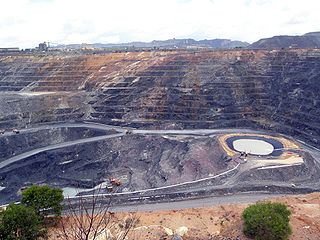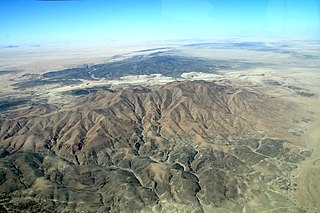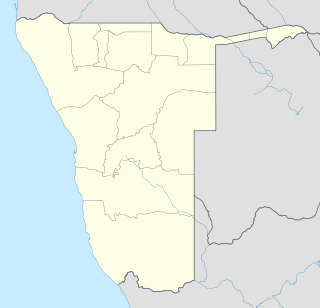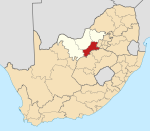
BHP, formerly known as BHP Billiton, is the trading entity of BHP Group Limited and BHP Group plc, an Anglo-Australian multinational mining, metals and petroleum dual-listed public company headquartered in Melbourne, Victoria, Australia.

East Singhbhum (is one of the twenty-four districts of Jharkhand state, India. It was created on 16 January 1990. More than 50% of the district is covered by dense forests and mountains, where wild animals once roamed freely.

Uranium mining is the process of extraction of uranium ore from the ground. The worldwide production of uranium in 2015 amounted to 60,496 tonnes. Kazakhstan, Canada, and Australia are the top three producers and together account for 70% of world uranium production. Other important uranium producing countries in excess of 1,000 tons per year are Niger, Russia, Namibia, Uzbekistan, China, the United States and Ukraine. Uranium from mining is used almost entirely as fuel for nuclear power plants.
Paladin Energy Ltd is a Western Australian based uranium production company.
Frank Giustra is a Canadian businessman, mining financier and philanthropist, who also founded Lionsgate Entertainment. From 2001 to 2007, he was the chairman of the merchant banking firm, Endeavour Financial, which financed mining companies. He is the CEO of Fiore Group of Companies.

Mining in South Africa was once the main driving force behind the history and development of Africa's most advanced and richest economy. Large-scale and profitable mining started with the discovery of a diamond on the banks of the Orange River in 1867 by Erasmus Jacobs and the subsequent discovery and exploitation of the Kimberley pipes a few years later. Gold rushes to Pilgrim's Rest and Barberton were precursors to the biggest discovery of all, the Main Reef/Main Reef Leader on Gerhardus Oosthuizen's farm Langlaagte, Portion C, in 1886, the Witwatersrand Gold Rush and the subsequent rapid development of the gold field there, the biggest of them all.

Gold mining in the People's Republic of China has made that country the world's largest gold producer by far with 463.7 tonnes in 2016. For the year 2007, gold output rose 12% from 2006 to 276 tonnes to become the world's largest for the first time—overtaking South Africa, which produced 272 tonnes. South Africa had until then been the largest for 101 years straight since 1905. The major reasons for this change in position had been due to South African production falling by 50% in the past decade as production costs there have risen, more stringent safety regulations have been implemented, and existing mines have become depleted.
The Australian Uranium Association was an Australian industry trade group which represented companies involved in uranium exploration, mining and export. It operated from September 2006 until 2013, after which its responsibilities were absorbed by the Minerals Council of Australia.
Mining is the biggest contributor to Namibia's economy in terms of revenue. It accounts for 25% of the country's income. Its contribution to the gross domestic product is also very important and makes it one of the largest economic sectors of the country. The majority of revenue comes from diamond mining.
Uranium production is an important part of the African economy, with Niger, Namibia, Libya and South Africa creating up to 18% of the world's annual production. Many African countries produce uranium or have untapped uranium ore deposits.

Radioactive ores were first extracted in South Australia at Radium Hill in 1906 and Mount Painter in 1911. 2,000 tons of ore were treated to recover radium for medical use. Several hundred kilograms of uranium were also produced for use in ceramic glazes. In 2017, of the world's estimated uranium resources, 30% were in Australia, ahead of the second largest, Kazakhstan. In terms of production, Canada is the largest supplier, followed by Kazakhstan and Australia. Uranium mined in Australia is entirely for export. Australia exported 64,488 tonnes of uranium in the ten years to 2017.
There are different methods by which gold mining companies are ranked. One is by their annual production. Another is by their cash cost per ounce, that is, how much money it costs them to mine the gold. Since gold prices are the same everywhere, companies with lower costs per ounce make more profit. The most common method lists by market capitalization which considers the total value of capital holdings by that company. Also considered when comparing companies is their market capitalization per ounce of gold equivalent which takes the market value and total reserves and resources for each company as well as the price of gold into consideration. The figures for each company can be used to determine the value the stock market gives to each company's reserves on an ounce to ounce basis.

The uranium mining debate covers the political and environmental controversies of the mining of uranium for use in either nuclear power or nuclear weapons.
The country mining the largest amount of uranium is Kazakhstan, which in 2017 produced 39% of the world's mining output. Canada was the next largest producer with a 22% share, followed by Australia with 10%. There are uranium mines on every inhabited continent.

The Langer Heinrich mine (LHM) is a large open pit mine located in the western part of Namibia in the Erongo Region. Langer Heinrich represents one of the largest uranium reserves in Namibia having estimated reserves of 57,000 tonnes of ore grading 0.055% uranium. The Langer Heinrich mine is currently owned by Paladin Energy Ltd with a 75% stake and CNNC Overseas Uranium Holding Ltd with a 25% stake. Paladin Energy sold the 25% to the Chinese National Nuclear Corporation (CNNC) in 2014 for a reported $190 million.

The Norasa uranium project comprises the Valencia and Namibplaas deposits in Erongo Region in the western part of Namibia. The two parts are 7 kilometres (4.3 mi) apart and both are fully owned by Forsys Metals. It represents one of the largest uranium resources in Namibia, having an estimated resource of 48,200 tU in ore grading 0.014-0.0167% uranium. The Valencia deposit was named after the farm where the uranium deposits were found.

The Olympic Dam mine is a large poly-metallic underground mine located in South Australia, 550 km NNW of Adelaide. It is the fourth largest copper deposit and the largest known single deposit of uranium in the world, although copper is the largest contributor to total revenue. Approximately 70% of the mine's revenue comes from copper, 25% from uranium, and the remainder from silver and gold. BHP has owned and operated the mine since 2005. The mine was previously owned by Western Mining Corporation.
The Dominion mine is a large mine located in the northern part of South Africa in Dominionville. Dominion represents one of the largest uranium reserves in South Africa having estimated reserves of 113.1 million tonnes of ore grading 0.037% uranium.

The Husab Mine, also known as the Husab Uranium Project, is a uranium mine under development near the town of Swakopmund in the Erongo region of western-central Namibia. The mine is located approximately 60 kilometres (37 mi) from Walvis Bay. The Husab Mine is expected to be the second largest uranium mine in the world after the McArthur River uranium mine in northern Saskatchewan, Canada and the largest open-pit mine on the African continent. The Husab Mine started production towards the end of 2016 after completion of the sulfuric acid leaching plant.

















